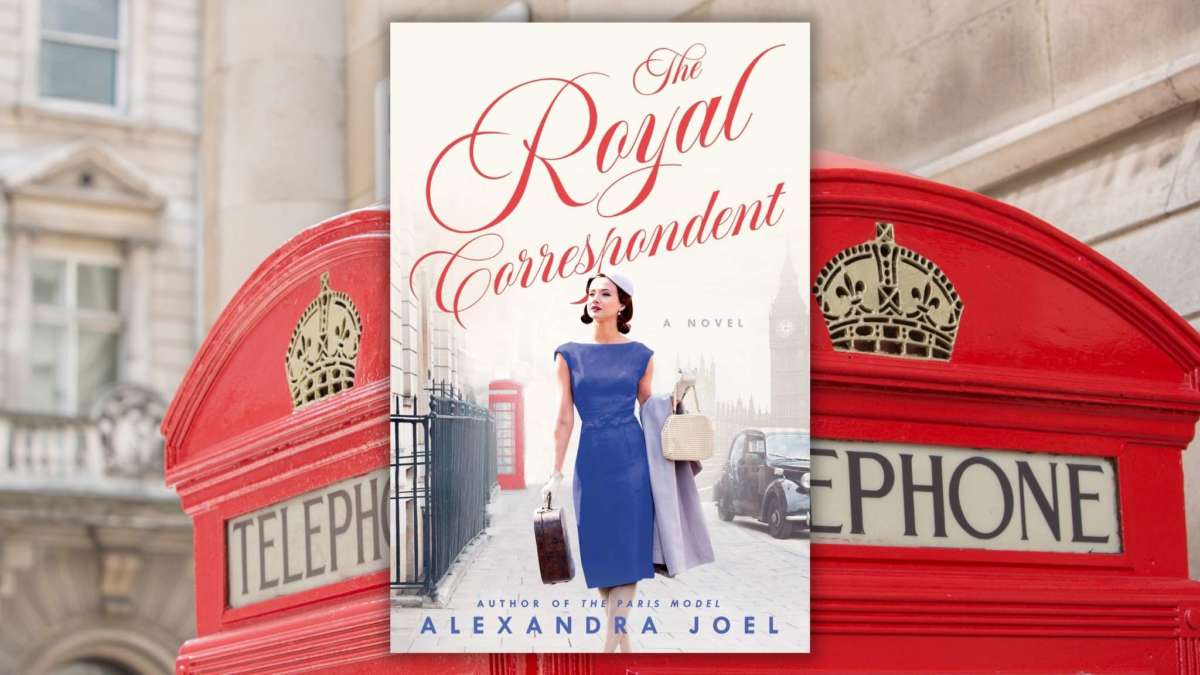It’s an up-from-the-slums journey for one Blaise Hill, a smart, upbeat young woman fresh out of secondary school and ready to plunge whole-heartedly into a life-changing career. Set in two world capitals, Sydney and London, and spanning the years between 1957 and 1962, readers follow the adventures of this intrepid Australian in Alexandra Joel’s captivating new novel The Royal Correspondent (Harper).
Aspiring to become a professional journalist, Blaise is determined to succeed in the male-dominated world of newspapers in order to help her poor, working family improve their life. The author has drawn upon her own experiences as a journalist and former magazine editor to create a marvelous novel, rich with details about the newspaper publishing and fashion industries in addition to the British Monarchy, polio epidemics, Cold War espionage, scandals and gossip of the times. This riveting story, complete with romance and intrigue, moves swiftly and provides a window into the mid-20th century when opportunities and work choices for women were appallingly limited.
The Hill Family resides in the urban slum area of Enmore, a Sydney suburb. The prevalent rentals in the neighborhood are grim, dilapidated and cramped terrace (row) houses built in the Victorian era. In these cold water flats, the residents share outdoor privies and bathe in washtubs. Blaise’s father is a hospital orderly, and her mother works part-time as a cleaner but is also the full-time caregiver for Ivy, Blaise’s bright and bubbly teenage sister who was severely stricken with polio during the last major epidemic to sweep Australia in 1956. Despite poverty, the Hill family home overflows with love. It is this intense loyalty to friends and family, however, that threatens their safety after Blaise is a silent witness to the death of a notorious Sydney gangster.
INTO THE BUSTLING NEWSROOMS OF 1950S AUSTRALIA
Crime and poverty are hardly the sole sources of conflict for Blaise; she still has her future the contend with. Although good grades afford her the opportunity to continue her education, she decides to start her career instead. Her father has told her repeatedly that the vocation choices for men were four, “priest, pugilist, police or press,” and emphasized there were fewer options for women. Journalism was the one profession in Australia where women were guaranteed equal pay (by court ruling), although most were relegated to the “women’s pages,” covering weddings, social occasions, any news of fashion, food and the British royal family.
Blaise, our fearless heroine, charms and impresses her way into an entry-level position as the first female copy boy at The Clarion, a major Sydney paper. She endures pranks, overt sexual advances and innuendos, bawdy humor and the intense pressure to perform well on a deadline while working in a noisy, smoke-filled pressroom. Inquisitive, observant and a quick study, she’s well-suited to the demands, willing to work long hours without complaint. Within a year, she is promoted to the fifth-floor women’s section while continuing to work extra hours on the evening shift in the newsroom.
FROM RAGS TO ROYAL CORRESPONDENT
In her new position, Blaise finds camaraderie, encouragement and unexpected support among the skilled women journalists and editors. Among them, she meets Harriet, a brilliant, poised young woman who speaks five languages, has an upper-crust education, and longs to serve in the Diplomatic Corp, though her sex and mixed-race heritage prohibit her from such aspirations. Harriet serves as both a work mentor and as the Henry Higgins to Blaise’s Eliza Doolittle, educating her in dress, manners and social conduct, even demonstrating how to curtsey to the Queen.
It is Harriet who introduces Blaise to Pandora, a wealthy, Cambridge University graduate who is completely au courant with London society, fashion and the Royals. Dora cheerfully acts as another “fairy godmother” and undertakes the continuing education of the Australian Cinderella-turned-Royal-Correspondent when Blaise is sent to London to cover Princess Margaret’s marriage to photographer Anthony Armstrong-Jones. It’s a heady whirl of excitement to be wearing fabulous borrowed Balenciaga- and Valentino-designed gowns to grand balls and meeting royalty. Blaise is thrilled to become friends with celebrities such as Cecil Beaton and the emerging, trendy designer Mary Quant. She also makes the acquaintance of the soon-to-be notorious Christine Keeler in addition to some other powerful new friends.
AN EXTRAVAGANT AND DELICIOUS DESSERT OF A NOVEL
There is certainly romance and intrigue here, but I will leave this for readers to discover and enjoy themselves. Joel’s novel is great historical fiction with research that is absolutely spot-on: Australia’s economy was still recovering from the effects of World War II and Korea, and many residents like the Hill family were barely scraping by. The world was plunged into a new, potentially world-destroying Cold War, and British intelligence was threatened by high-ranking moles, including some infamous Cambridge University-educated spies who sold secrets to the Soviets. However, reporting on the lives of all members of the British Monarchy was still front-page news throughout the Commonwealth. Princess Margaret was endlessly fascinating and dominated the fashion and scandal sheets until she was supplanted by Princess Diana.
Reading The Royal Correspondent is akin to diving into an extravagant and delicious dessert. It has broad appeal to Anglophiles, avid viewers of The Crown and anyone interested in this era of rapid changes. It is one that I personally, highly recommend.
https://booktrib.com/wp-content/uploads/2021/09/Alexandra-Joel1-2.jpg
About Alexandra Joel:
Alexandra decided later on it was time for a mid-life career change and undertook postgraduate studies in Applied Psychology and began a successful psychotherapy practice. A decade later, she found a new passion in writing and published her first book. This book was her memoir, Rosetta: A Scandalous True Story.




